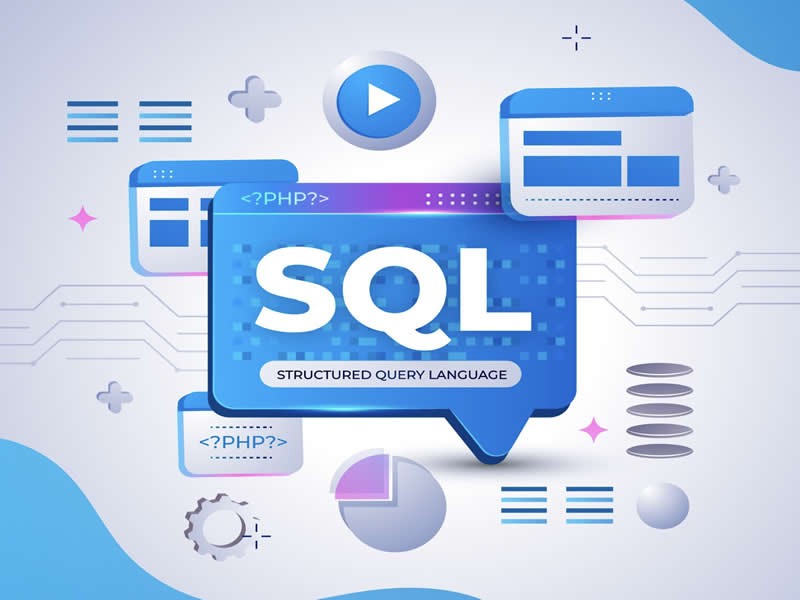Insight Blog
Agility’s perspectives on transforming the employee's experience throughout remote transformation using connected enterprise tools.
8 minutes reading time
(1533 words)
Future-Proofing Your Database: The Importance of Upgrading MySQL
Unlock a host of advanced features with our comprehensive guide to upgrading from MySQL 5.6 to version 8. Ensure a seamless transition and enhance the security of your database environment.
In the contemporary landscape of data-centric operations, businesses hinge profoundly on robust and secure databases to house, structure, and oversee vital information.
Among the plethora of databases available, MySQL stands out as a widely embraced open-source system designed for the management of relational databases.
Over the years, MySQL 5.6 has garnered popularity as a stalwart choice for numerous organizations. Nonetheless, in the ever-evolving technological landscape where security threats are a constant concern, it has become imperative for businesses to transition towards newer iterations of MySQL.
This piece delves into the significance of migrating from MySQL 5.6, shedding light on the critical reasons behind this shift and elucidating the advantages it bestows upon fortifying the future security of your database.
Upgrading to newer versions of MySQL, such as MySQL 8.0, goes beyond a mere technicality – it is a strategic move to safeguard your data against emerging threats and vulnerabilities.
With the rapid pace of technological advancements, security protocols must evolve in tandem. MySQL 5.6, while commendable in its time, may lack the robust defenses and features incorporated in the latest iterations.
By transitioning to MySQL 8.0, businesses not only bolster their defense mechanisms but also gain access to enhanced performance, improved scalability, and a broader array of features.
This proactive approach to database management aligns with the broader paradigm of future-proofing, ensuring that your data infrastructure remains resilient in the face of ever-changing cybersecurity challenges.
As we navigate the intricacies of the digital era, the commitment to staying abreast of the latest technological safeguards becomes paramount for any organization that values the integrity and security of its data.
What are the Main Changes in the Latest MySQL Verison?
Released in February 2013, MySQL 5.6 stands as a robust relational database management system (RDBMS) that has long served as a dependable foundation for numerous organizations. It has consistently delivered standard performance and security features, solidifying its status as a reliable backbone for a variety of applications.
In the subsequent version, MySQL 5.7, introduced in October 2015, notable improvements were made.
This release is renowned for its heightened performance, support for JSON, and enhanced security, surpassing the capabilities of its predecessor, MySQL 5.6.
The most recent iteration, MySQL 8, represents a significant evolution from its predecessors.
Unveiling in-depth changes, version 8 introduces heightened performance through the InnoDB storage engine, decreased downtime with instant DDL (Data Definition Language), and enhanced security through the adoption of a new default authentication method — caching_sha2_password.
MySQL 8 embraces advanced SQL functionalities such as window functions and common table expressions.
These additions empower developers with increased flexibility and greater command over querying and managing data, making MySQL 8 a compelling choice for those seeking cutting-edge features in an open-source database.
What are the Key Changes in MySQL 8
MySQL 8 introduces a sweeping array of enhancements, positioning itself as an enticing option for businesses aiming to stay ahead in the competitive landscape.
Among the notable transformations are the adoption of a Transactional Data Dictionary, replacing the nontransactional system in previous versions. This transition enhances the efficiency of storing information about database objects, a crucial aspect in optimizing overall performance.
An integral facet of MySQL 8 is the emphasis on advanced security features. The introduction of the caching_sha2_password authentication method, superseding the mysql_native_password, not only fortifies password encryption but also contributes to improved performance, aligning with the evolving standards of data protection in contemporary digital environments.
8.0 elevates its capabilities with enhanced JSON support, introducing new functions and refining performance for sorting and grouping JSON values. This encompasses extended syntax for ranges in JSON path expressions, along with the incorporation of JSON table functions, aggregation functions, merge functions, and enhanced sorting capabilities.
In response to the burgeoning demand for comprehensive geography support, MySQL 8.0 incorporates GIS and Spatial Reference System (SRS) support.
An integral facet of MySQL 8 is the emphasis on advanced security features. The introduction of the caching_sha2_password authentication method, superseding the mysql_native_password, not only fortifies password encryption but also contributes to improved performance, aligning with the evolving standards of data protection in contemporary digital environments.
8.0 elevates its capabilities with enhanced JSON support, introducing new functions and refining performance for sorting and grouping JSON values. This encompasses extended syntax for ranges in JSON path expressions, along with the incorporation of JSON table functions, aggregation functions, merge functions, and enhanced sorting capabilities.
In response to the burgeoning demand for comprehensive geography support, MySQL 8.0 incorporates GIS and Spatial Reference System (SRS) support.
With metadata support for SRS, SRS-aware spatial datatypes, indexes, and functions, it boasts a repository of approximately 5000 SRIDs from the EPSG Geodetic Parameter Dataset, covering georeferenced ellipsoids and 2D projections.
The version's character sets and performance improvements are notable, featuring a shift in the default character set from latin1 to utf8mb4, accompanied by an updated default collation. This transformation translates into a significant enhancement in SQL performance, particularly in sorting UTF8MB4 strings.
MySQL 8 also ushers in Role-Based Access Control (RBAC), introducing support for roles, which are named collections of privileges that can be easily managed and assigned to user accounts. Additionally, the file structure has undergone a revamp, with formats like .TRG, .FRM, .TRN, and .PAR no longer in existence.
MySQL 8.0 is designed for optimization and performance enhancements, showcasing improved efficiency in read/write workloads compared to its predecessor, MySQL 5.7. The inclusion of Common Table Expressions (CTEs) and Window Functions further augments the database's query capabilities, facilitating more intricate and efficient SQL operations.
The version's character sets and performance improvements are notable, featuring a shift in the default character set from latin1 to utf8mb4, accompanied by an updated default collation. This transformation translates into a significant enhancement in SQL performance, particularly in sorting UTF8MB4 strings.
MySQL 8 also ushers in Role-Based Access Control (RBAC), introducing support for roles, which are named collections of privileges that can be easily managed and assigned to user accounts. Additionally, the file structure has undergone a revamp, with formats like .TRG, .FRM, .TRN, and .PAR no longer in existence.
MySQL 8.0 is designed for optimization and performance enhancements, showcasing improved efficiency in read/write workloads compared to its predecessor, MySQL 5.7. The inclusion of Common Table Expressions (CTEs) and Window Functions further augments the database's query capabilities, facilitating more intricate and efficient SQL operations.
So upgrading from MySQL 5.6 to 8 signifies a strategic move to meet the evolving demands of modern applications.
This transition marks a commitment to a more resilient and feature-rich database environment, aligning with the dynamic requirements of contemporary businesses.
Developing with Technology: Why the MySQL 5.6 Upgrade Is Necessary
In today's fast-paced technology environment, businesses must adapt and evolve with advancements to remain competitive.
By upgrading to newer versions, you gain access to enhanced features, functions, and optimizations that increase the overall performance of your database.
How to upgrade to a newer version can be found at https://modlogix.com/blog/how-to-upgrade-mysql-5-6-to-8-version/ From better query optimization to improved scalability and faster data processing, these upgrades allow your organization to take advantage of the full potential of modern database technologies.
Additionally, upgrading to MySQL 5.6 allows your business to stay in line with industry standards and best practices and ensure compatibility with the latest software and applications.
Embracing evolving technology through database upgrades will ensure your business succeeds in the digital age, unlocking opportunities for greater efficiency, productivity, and innovation.
As technology continues to move forward, upgrading your database becomes even more important to stay ahead and stay competitive in the market.
Follow us and access great exclusive content everyday: Follow us on Google News
Increased performance and security: The benefits of database upgrades
Upgrading your database provides several benefits, with increased performance and security being the most significant benefits. By upgrading to a newer database version you can significantly improve the performance of your system.
Upgrades often come with optimizations that result in faster data processing, more efficient query execution, and increased scalability. These improvements lead to increased efficiency, faster response times to queries, and an overall better user experience.
In addition to performance, database upgrades also increase the security of your system. Upgraded versions often introduce advanced security features such as stronger encryption, improved authentication protocols, and robust security mechanisms.
With these added security measures, your database will be better equipped to protect your data from unauthorized access, cyber threats, and potential leaks.
By investing in database upgrades, you optimize the functionality of your database while strengthening its defenses against security vulnerabilities.
The benefits are not just about increased performance, but also a stronger security posture to protect your valuable data assets.
Overall, database upgrades provide a comprehensive solution to increase performance and security, keep your database system running smoothly, and provide peace of mind for both users and administrators.
Staying Competitive: The Strategic Advantage of Database Upgrades
In today's highly competitive business environment, staying ahead is critical to success. Upgrading your database provides a strategic advantage that can move your organization forward.
With each upgrade, you gain access to innovative features, capabilities, and tools that enable you to make effective data-driven decisions.
Upgraded databases offer a comprehensive solution for data analysis, reporting, and advanced data processing, allowing you to quickly gain valuable insights and gain a competitive advantage.
By leveraging the power of modern database technologies, you can streamline your operations, optimize workflows, and improve overall efficiency.
Upgrading your database will not only enable you to meet customer expectations but also help you stay relevant in a rapidly evolving business environment.
It allows you to take advantage of the latest industry standards and best practices and ensure compatibility with new software and applications that can increase your productivity and efficiency.
You may also like: Best Apps for Employees: UPDATED 2022 – A Complete Guide
Free ebook: How To Get Your Intranet Off The Ground
Wrapping up
Upgrading to MySQL 5.6 is essential for the future security of your database.
By upgrading to newer versions, businesses can strengthen their database security, increase overall performance, and stay competitive in a rapidly evolving business environment.
In addition, staying on top of upgrades allows businesses to take advantage of new features and capabilities provided by MySQL, unlocking the potential to use data more efficiently.
Upgrading your MySQL database is not just an investment now; it's an investment in the future that protects your data and maximizes your organization's potential.
So don't wait - start preparing your database for the future
Categories
Blog
(2596)
Business Management
(318)
Employee Engagement
(206)
Digital Transformation
(173)
Intranets
(119)
Growth
(118)
Remote Work
(61)
Sales
(48)
Collaboration
(37)
Culture
(29)
Project management
(29)
Customer Experience
(26)
Knowledge Management
(21)
Leadership
(20)
Comparisons
(5)
Ready to learn more? 👍
One platform to optimize, manage and track all of your teams. Your new digital workplace is a click away. 🚀
Free for 14 days, no credit card required.













